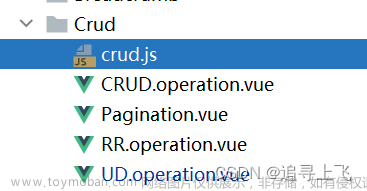在Vue中,插槽(Slot)是一个非常强大且灵活的特性,用于在父组件中定义子组件的内容。Vue提供了两种主要类型的插槽:默认插槽(Slot)和作用域插槽(Scoped Slot)。本篇博文将深入介绍这两种插槽类型,从基础到进阶。
默认插槽(Slot)
公众号:Code程序人生,个人网站:https://creatorblog.cn
默认插槽是Vue中最基本的插槽类型,它允许你将父组件中的内容插入到子组件中。下面是一个简单的示例:
<!-- ParentComponent.vue -->
<template>
<div>
<child-component>
<p>This content will go into the slot.</p>
</child-component>
</div>
</template>
<!-- ChildComponent.vue -->
<template>
<div>
<slot></slot>
</div>
</template>
在这个示例中,child-component 包含一个默认插槽 slot,它会渲染父组件传递的内容。
具名插槽(Named Slots)
除了默认插槽,Vue还支持具名插槽,允许您在子组件中定义多个插槽,并在父组件中指定哪个插槽接收内容。以下是一个具名插槽的示例:
<!-- ChildComponent.vue -->
<template>
<div>
<slot name="header"></slot>
<div>
<slot name="content"></slot>
</div>
</div>
</template>
<!-- ParentComponent.vue -->
<template>
<div>
<child-component>
<template v-slot:header>
<h1>Header Slot</h1>
</template>
<template v-slot:content>
<p>Content Slot</p>
</template>
</child-component>
</div>
</template>
在这个示例中,child-component 有两个具名插槽:header 和 content。父组件使用 v-slot 指令将内容插入到相应的插槽中。
作用域插槽(Scoped Slot)
作用域插槽是一种高级插槽类型,允许子组件向父组件传递数据。这对于动态生成内容非常有用。以下是一个作用域插槽的示例:
<!-- ChildComponent.vue -->
<template>
<div>
<slot :user="user"></slot>
</div>
</template>
<script>
export default {
data() {
return {
user: {
name: 'John',
age: 30
}
};
}
};
</script>
<!-- ParentComponent.vue -->
<template>
<div>
<child-component>
<template v-slot="{ user }">
<p>User Name: {{ user.name }}</p>
<p>User Age: {{ user.age }}</p>
</template>
</child-component>
</div>
</template>
在这个示例中,child-component 的作用域插槽将 user 数据传递给父组件,父组件可以在插槽中使用这些数据。文章来源:https://www.toymoban.com/news/detail-697716.html
总结
Vue的插槽和作用域插槽是非常有用的功能,用于创建灵活的组件,使父子组件之间的通信更加强大和可控。文章来源地址https://www.toymoban.com/news/detail-697716.html
到了这里,关于Vue的插槽与作用域插槽详解的文章就介绍完了。如果您还想了解更多内容,请在右上角搜索TOY模板网以前的文章或继续浏览下面的相关文章,希望大家以后多多支持TOY模板网!












